Seven more Australians get blood clots after receiving AstraZeneca COVID vaccine
Australia’s medicines watchdog has revealed seven people were affected by blood clots after getting the AstraZeneca COVID vaccine.
National
Don't miss out on the headlines from National. Followed categories will be added to My News.
There have been seven new blood clot cases following the AstraZeneca vaccine, the Therapeutic Goods Administration has revealed.
The new cases of thrombosis with thrombocytopenia syndrome (TTS) were revealed in the TGA’s COVID-19 vaccine weekly safety report on Thursday.
Three cases were confirmed as TTS, while four were deemed probable.
The three confirmed cases included a 75-year-old man from Victoria, a 75-year-old man from Western Australia and a 59-year-old Queensland man who was diagnosed in Victoria.
“Of these, only the Victorian man remains in hospital, but is responding to treatment and is in a stable condition,” a TGA statement read.
“The other two patients are not currently in hospital and are thought to be well.
“Four other newly reported cases are considered to be probable TTS. This includes three men from Victoria aged 65, 70 and 81 years, and a 70-year-old man from NSW.”
All but one of the newly reported cases was vaccinated after the April 8 recommendation by ATAGI that Comirnaty was preferred over the AstraZeneca vaccine in adults aged under 50 years.
The developments take the total Australian reports of cases assessed as TTS following the AstraZeneca vaccine to 18.
About 1.8 million doses of the AstraZeneca vaccine have been administered so far.
AUSSIES CAN MIX AND MATCH COVID JABS
Australians who have already had one COVID-19 jab are likely to be able to mix and match brands when they get a second or a booster dose.
The development came as the government announced a deal to purchase 25 million doses of Moderna’s mRNA COVID-19 vaccine, including 15 million doses that will protect against mutant variants of the virus.
It also revealed it was talking to US pharmaceutical giant Moderna and other companies about setting up local production of new age mRNA vaccines including COVID-19 in Australia.
These vaccines are much faster to produce and it is possible the method could lead to new, more effective vaccines for the flu and other diseases.
“It’s a technology we need to have, we are one of the small number of countries that have onshore sovereign mega vaccine manufacturing capability and we want to keep ahead of the game in that space,” Health Department chief Professor Brendan Murphy said.
The announcement Australia has purchased booster doses of COVID-19 from Moderna means most people will be getting a booster dose made by a different company than the one that produced the first doses they received.
However, Professor Murphy reassured people this was not a problem — it might actually help enhance immunity to the virus causing the pandemic.
“We think there is no reason why you can’t mix and match vaccines … in fact there may be some benefit,” he said.
This is because people may develop immunity to the adenovirus used in some vaccines like AstraZeneca’s potentially reducing the effectiveness of the second dose of the vaccine, he said.
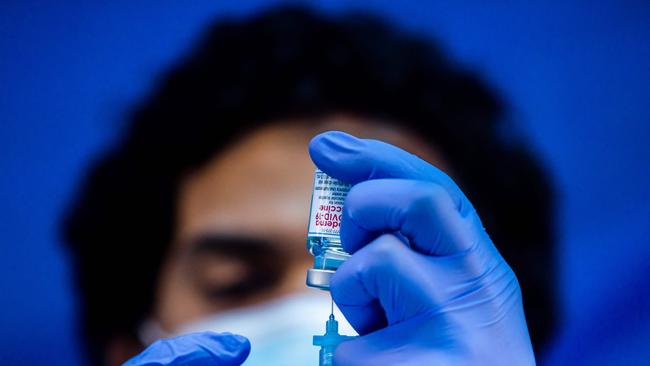
Trials of mixing and matching vaccine brands are underway in the UK but are yet to report.
Because it was in the midst of an uncontrolled outbreak that country has pursued a strategy of giving as many people as possible a single dose of vaccine even though most require two doses.
Professor Murphy’s comments leave open the possibility that Australians who have had a first dose of AstraZeneca vaccine may be able to get a Pfizer or Moderna shot as their second dose.
It also means those who have had the Pfizer and AstraZeneca jabs will be able to have a booster shot of a vaccine made by a third pharmaceutical company — Moderna — in order to gain protection from new variants of the virus.
Professor Murphy urged Australians over the age of 50 not to hold off getting vaccinated with the AstraZeneca jab now, as they were most at risk from COVID-19.
The new Moderna deal could be our key to reopening borders.
The company will supply Australia with 10 million doses of its original COVID-19 vaccine with the first one million doses arriving from late September.
Another nine million will come in the last three months of the year.
Next year the company will provide 15 million doses of an updated vaccine it is developing to beat new variants that evolved in the UK, South Africa, Brazil and elsewhere.
“They are the foundation of our booster or variant strategy,” Health Minister Greg Hunt said.
Many of the original COVID-19 vaccines do not work as well against mutant variants with AstraZeneca’s vaccine just 10 per cent effective against the South African variants.
The new vaccine will not have to go through lengthy clinical trials and could be on the market quickly.
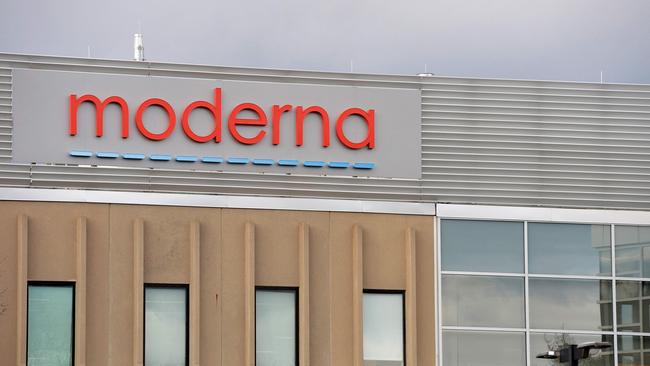
The Moderna vaccine is an mRNA vaccine similar to the Pfizer jab it teaches our cells how to make a protein from the virus that causes COVID-19 and triggers an immune response inside our bodies.
It has been approved for emergency use in the US for people aged over 18 and like the Pfizer vaccine will be a safer option than AstraZeneca for those aged under 50.
The AstraZeneca vaccine is not the preferred vaccine for this age group because of the risk of rare blood clots.
Before it can be used here it will have to be approved by Australia’s medical regulator the Therapeutic Goods Administration.
With clinical trials showing it has an effectives rate of 94 per cent the Moderna jab is one of the most successful vaccines on the market.
Real world data shows two weeks after just a single shot of the Moderna vaccine the risk of COVID-19 infection was reduced by 80 per cent.
The risk of infection fell 90 per cent by two weeks after the second shot.
More than 70 million doses have been used in the US which began using the vaccine in December 2020, France began using it in January 2021, Singapore in March 2021 and the UK in April 2021.
From July, Australia’s Pfizer supplies will double to 600,000 per week, up from 300,000 per week in June.
The Novavax vaccine we have purchased is still in clinical trials and is experiencing production problems but Mr Hunt said he was still expecting it to be delivered later this year. Australia has ordered 51 million doses.
Some people need to be cautious about using the Moderna vaccine if they have allergies that produce anaphylactic reactions that mean they have to carry an epipe.
A very small number of people have experienced anaphylactic reactions to the vaccine and if this happens the US Food and Drug Administration advises they should not to have the second dose.
This reaction usually happens within a few minutes to one hour after receiving the jab.
Unlike the AstraZeneca vaccine, the Moderna vaccine needs more careful storage at very cold levels but it has a better storage profile that the sensitive Pfizer jab.
HUNT CONFIRMS MODERNA DEAL
Health Minister Greg Hunt confirmed Australia will buy 25 million doses of Moderna’s COVID-19 vaccine.
“They are foundation of a booster or variant strategy,” Mr Hunt said of the deal.
“Our goal has been to prepare for everything that is possible,” Mr Hunt said.
The government will soon begin discussions with a range of companies interested in producing mRNA vaccines locally and Moderna was one of them, he said in Canberra.
Federal Health Department chief Professor Brendan Murphy said Moderna’s vaccine was a “highly effective vaccine … this is an exciting development”.
Moderna was the pharmaceutical company that was most advanced in developing a booster COVID-19 that would protect people against mutant variants, Professor Murphy said.
Moderna will not have to conduct new clinical trials of its booster vaccine if the company can show it will produce antibodies in a small trial, Professor Murphy said.
This will mean the booster shot can be made available very quickly because it will be able to sidestep the need for full clinical trials can take six to twelve months to report.
One million doses of Moderna’s vaccine will arrive in late September and another nine million will arrive in the final three months of the year Mr Hunt said.
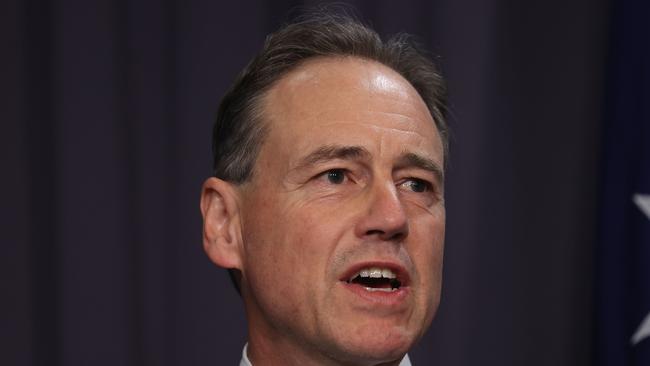
Professor Murphy urged elderly Australians not to hold off getting vaccinated now.
These people were most at risk from COVID-19 and they should not wait until more doses of Pfizer and Moderna vaccines arrived later this year but should take advantage of the AstraZeneca vaccine now, he said.
Emerging vaccine over supply in the United States does not appear likely at this stage to speed up Australia’s access to more doses of Pfizer’s COVID-19 vaccine.
Mr Hunt said the number of weekly doses coming to Australia was still on schedule to double from June.
Moderna will deliver 10 million doses this year and by 2022 deliver 15 million booster shots that are still being tested but meant to neutralise variants of COVID-19, the company and the Australian government said in a statement.
“We appreciate the partnership and support from the government of Australia with this first supply agreement for doses of the Moderna COVID-19 vaccine and our variant booster candidates,” Moderna CEO Stephane Bancel said in a statement.

PM WON’T MAKE CALL ON VACCINES, TRAVEL
Meanwhile, Mr Morrison would not say when all Australians will be vaccinated or when international borders will open again, a day after Treasurer Josh Frydenberg handed down the government’s pandemic budget.
Appearing on the 7.30 Report, Mr Morrison said the federal budget was not dependent on Australia’s COVID-19 vaccination rollout.
“There is a general assumption [in the budget] of a vaccination program [which is] likely to be in place by the end of this year,” Mr Morrison told Leigh Sales.
“That will not have a material impact on what’s in this budget, and it would be a mistake to think it did.”
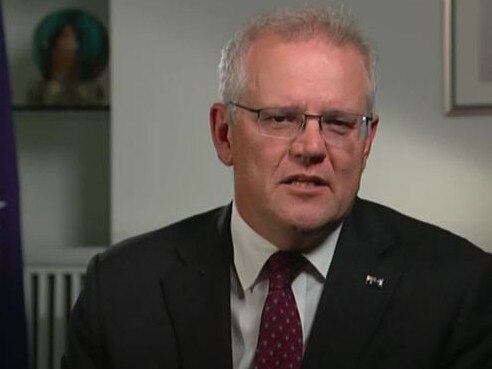
The government initially determined that any person in Australia who wanted to get the first dose would be able to by the end of October.
But the nation’s vaccine rollout has been curbed by supply problems and by worries over the safety of the AstraZeneca vaccine for the under-50s.
The budget included $1.9 billion for Australia’s vaccination blueprint over five years but did not set any concrete targets.
Under questioning from Labor in parliament yesterday, Mr Morrison could not give a time frame on when all Australians would be immunised.
“That [the budget assumption] is not a policy statement nor is it a policy commitment,” he said.
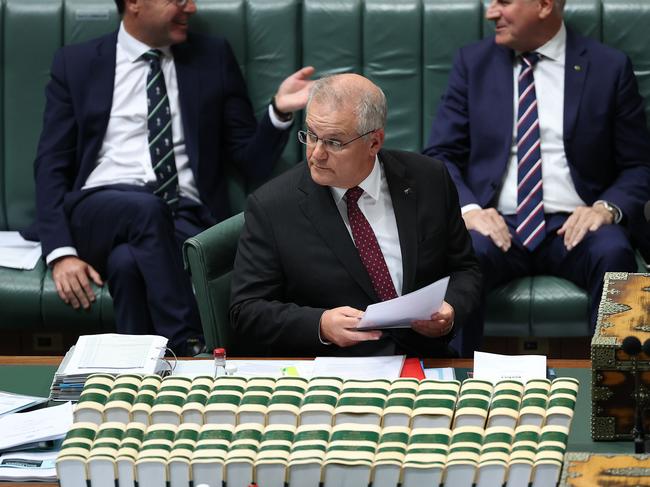
The budget assumes borders will remain closed until the middle of 2022, aside from particular exemptions.
A “gradual return of temporary and permanent migrants” is expected from mid-2022, with the potential for international students to travel sooner.
The budget also allowed for more arrangements like the trans-Tasman bubble, but said quarantine caps would operate “with the exception of passengers from safe travel zones”.
Mr Morrison said he could not say for sure that Australians would be able to come home without quarantine after 2022.
“It’s impossible for me to make those sorts of predictions in the middle of a global pandemic, the likes of which we haven’t seen for 100 years,” he said.
“I can fully understand why people want greater certainty, but I can only provide the certainty that’s available.”

FRYDENBERG SLAMS VICTORIA’S ‘CATASTROPHIC FAILURE’
Earlier, Mr Frydenberg slammed the Victorian government, calling its hotel quarantine system a “catastrophic failure”.
The Melbourne MP said that while the national system had “by and large” been effective, “in Victoria, where there was a catastrophic failure. No-one wants to see a repeat of that.”
Mr Frydenberg made the comments in a Press Club address on Wednesday, less than two hours after handing down the Morrison Government’s 2021-22 federal budget.
During the speech, Mr Frydenberg acknowledged Victoria has requested $200 million in federal funding for new purpose-built quarantine centre to be erected outside of Melbourne in a bid to avoid future community outbreaks. The funding has yet to be approved, with Mr Frydenberg saying the government would respond to the request “in due course”.
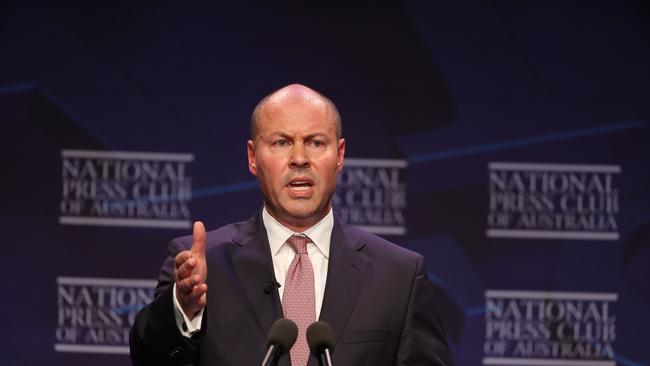
VICTORIANS ON HIGH ALERT
Thousands of Melburnians are at risk of being exposed to COVID-19 after a positive case travelled on the state’s public transport system.
Victoria remains on high alert despite no new cases of COVID-19 being recorded overnight.
The state reported one new case on Tuesday after a man who completed 14 days of hotel quarantine in South Australia returned to his home in Melbourne and was active within the community before returning a positive test.
The man visited a number of locations in Epping, Altona and across the Melbourne CBD, and travelled on public transport, leading to the state government to issue warnings to tens of thousands of Victorians who may have unwittingly come into contact with the virus.
On Wednesday, Victorian Health Minister Martin Foley urged anyone who had travelled on Metro trains between Craigieburn and Flinders Street stations on May 7 to be on high alert.
“We are working with both Metro services and the AFL, given it was the aftermath of the Richmond and Geelong game,” Mr Foley said.
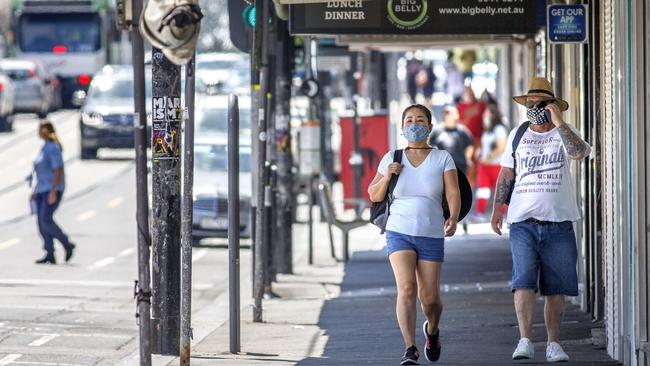
“We’re working to get that message out through their clubs and get that message out to what we expect would be many hundreds of people on that train.”
All close contacts, including three who live with the man, have returned negative tests to date.
The man returned to Australia from India on April 19, and returned to Victoria on May 4 after completing hotel quarantine in South Australia. According to Victorian health authorities the man only began to develop symptoms four days after returning home.
Following the news, health authorities have encouraged Victorians to act with caution and wear masks where possible.
Meantime, NSW recorded no new community cases and four hotel quarantine cases following its outbreak scare last week.
“Despite extensive investigations into the source of two locally acquired cases announced last week, NSW Health has not identified how the initial case was exposed to COVID-19,” NSW health authorities said.
“They may have acquired the infection through brief contact with a currently unidentified person who was infectious in the community. No further cases have been identified.”
$1.9 BILLION IN BUDGET FOR VACCINES
More than 2.6 million Australians have had their COVID shot, but the budget allocates $1.9 billion to pay for more vaccines this year and into 2022.
This will cover the 170 million doses of Pfizer, AstraZeneca and Novavax vaccines the government has already ordered.
But the virus is mutating and pharmaceutical companies are warning people will need annual booster doses of COVID-19 vaccines as well as newer jabs to ward off tricky variants from South Africa, Brazil and India.
The budget does not explicitly include funding for vaccines beyond 2022 or for new ones to cover variants but Health Department officials said this was because these arrangements were commercial in confidence.
They said there was funding in the budget for this.
To speed up the troubled vaccine rollout the federal government will give the states $510.8 million over two years to administer vaccines through mass vaccination and other clinics.

Taxpayers will spend $233.8 million on freight companies who are ferrying vaccines to GP clinics and other vaccination providers.
With vaccine hesitancy a key problem after fears about side effects like rare blood clots, the government is planning to spend only a tiny $6.7 million on a national communications campaign to encourage people to get their COVID-19 jab.
COVID expenses extend beyond vaccines with a further $1.5 billion set aside for coronavirus-related health services, including for testing and tracing, respiratory clinics, personal protective equipment and telehealth.
With quarantine the key to getting stranded Aussies home the government will spend nearly $500 million over the next two years to expand quarantine facilities in the Northern Territory.
Originally published as Seven more Australians get blood clots after receiving AstraZeneca COVID vaccine




